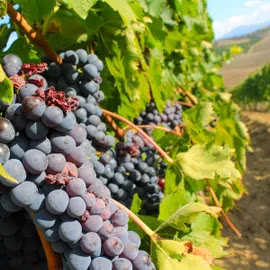My niece and I are planning to go to Tuscany next year. It will be my first trip to Europe since the pandemic and my first time in Italy. Tuscany conjures in my mind images of sunshine and sunflowers, culture and cuisine, and wondrous wines. I can’t wait!
 |
| Tuscany by Johny Goerend on Unsplash |
In the meantime, I will have to settle for experiencing Tuscany with my palate. Lucky for me, I happened to have two bottles of San Felice Chianti Classico Gran Selezione of different vintages in my cellar: 2013 and 2016. Both of them are made with 100% Sangiovese.
There is Chianti, and There is Chianti
The area known as Chianti today was a wine growing region demarcated in the 1700s by Cosimo III de’ Medici, the Grand Duke of Tuscany. It has since expanded in size and production. In 1967, shortly after the launch of the Italian wine classification, Chianti was designated as a Denominazione di Origine Controllata (DOC). Sangiovese was and remains the primary grape variety allowed by the designation.
A couple of decades later in 1984, the Italian government added an even higher level of classification known as Denominazione di Origine Controllata e Garantita (DOCG) and designated the area as Chianti DOCG. Then in 1996, Chianti Classico separated from Chianti DOCG to become its own DOCG.
- Chianti Colli Aretini
- Chianti Colli Fiorentini
- Chianti Colli Senesi
- Chianti Colline Pisane
- Chianti Montalbano
- Chianti Montespertoli
- Chianti Rufina
- Barberino Val d’Elsa
- Castellina in Chianti
- Castelnuovo Berardenga
- Gaiole in Chianti
- Greve in Chianti
- Poggibonsi
- Radda in Chianti
- San Casciano Val di Pesa
- Tavernelle Val di Pesa
 |
| Vertical Tasing of Poggio Rosso |
This later earned the designation Gran Selezione in 2011, which required the wine to come from a single vineyard and be aged for at least 30 months.
2013 Poggio Rosso
Gran Selezione is only released during outstanding vintages. In fact, the 2013 Poggio Rosso was only the second vintage of the Gran Selezione. The year started cooler with an abundance of rainfall that led to delayed flowerings among the vines. This recovered quickly with above average temperatures in early July and gradual maturation in August and September. By harvest, the grapes had plenty of aromatic substances and polyphenols.
Medium ruby with a tinge of garnet in the glass, a swirl of the wine brings an opulent aroma of cherries and herbs. The palate is delicate and pleasant with tart cherries. It is medium-bodied with high acidity. The tannins are fine and integrated, and the finish is very long.
2016 Poggio Rosso
2016 is the fourth vintage of the Gran Selezione. That year, the winter was mild and rainy. Unlike 2013, high temperatures in April of 2016 caused the vines to flower a couple of weeks early. A regular May followed by unseasonably hot summer months with periodic rains allow the vines to fruit without water distress.
Possessing the classic Sangiovese medium ruby color, the wine gives off a yeasty, earthy aroma. On the palate, the funk eases into a vibrant burst of tart cherries. The wine is light to medium-bodied with high acidity and hairy tannins. The finish remains very long.
My Verdict: While both vintages differ in the finer flavor profiles, the underlying structure of the wine is typical of a Chianti Classico - the ruby color, the tart cherries, high acidity, and long finish. The older vintage has an elegance to it, while the younger vintage is livelier and has more character and complexity. I look forward to enjoying a glass of Chianti Classico next year in Tuscany itself.

























